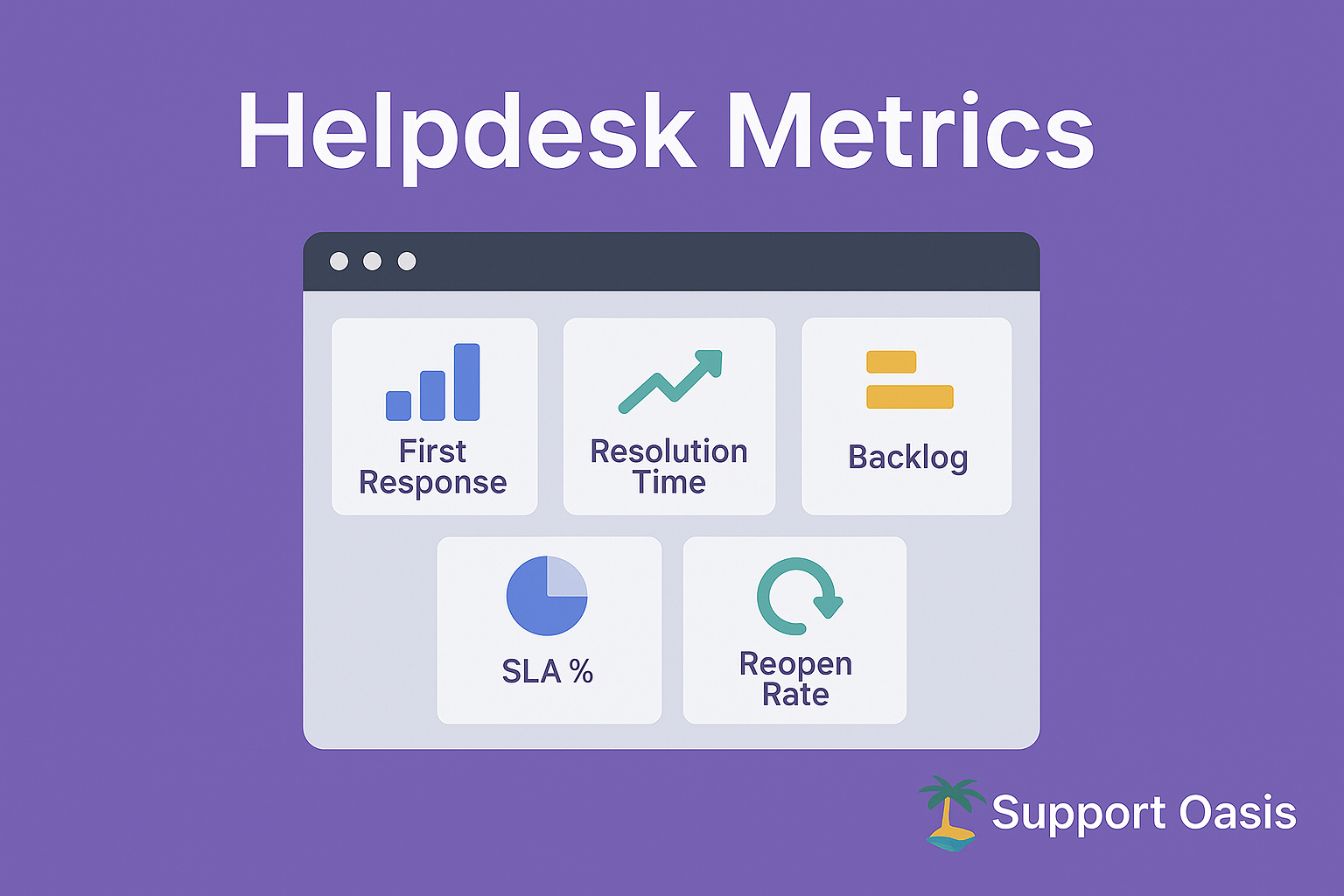Strong helpdesk metrics give small teams clarity, speed, and control. As a result, agents focus on the right work and leaders spot issues early. In addition, simple targets create shared expectations that improve customer trust.
Why Helpdesk Metrics Matter
First, metrics make invisible work visible. Consequently, you can see where time goes and where customers wait. Moreover, clear numbers help you justify staffing and process changes. According to Harvard Business Review, consistent and timely communication drives loyalty, so tracking what affects response time is essential. For setup context, see How to Set Up a Helpdesk for Your Small Team in One Day and Email-Based Helpdesk: Simple Setup for Small Teams.
Helpdesk Metrics to Track
Start with a focused set, then expand later.
1) First response time
How long it takes to send the first human reply. Shorter times reduce repeat pings and frustration. Target: within one business hour for high priority, within four hours for normal.
2) Resolution time
Time from ticket creation to close. Therefore, this shows how well you solve issues, not just acknowledge them. Target: within one business day for normal requests.
3) Backlog
Open tickets at end of day. In other words, your true workload. Target: steady or declining trend across the week.
4) Reopen rate
Percentage of tickets reopened after close. Because it signals quality, a drop here often means clearer replies. Target: under five percent.
5) SLA attainment
Share of tickets that meet your time targets. Consequently, this keeps promises visible. Target: above ninety percent for committed priorities.
Optional when ready: CSAT with a short post-resolution question. For lean tool criteria, review Helpdesk Software Without the Bloat: Tools Built for Lean Teams.
Helpdesk Metrics Setup Checklist
First, confirm email forwarding so all work becomes tickets. Next, enable priorities and tags, since routing drives reliable data. Then, add saved replies to remove slow typing and inconsistent phrasing; see Helpdesk Saved Replies: 15 Templates for Small Teams. Finally, create one dashboard with five widgets: first response, resolution time, backlog, reopen rate, and SLA attainment.
Sample Targets for Small Teams
Set goals you can meet, then raise them as you improve.
- High priority: first reply within 1 hour, resolution same day.
- Normal priority: first reply within 4 hours, resolution within 1 business day.
- Backlog: finish each Friday with fewer open tickets than Monday.
- Reopen rate: under 5 percent after two weeks of templates.
- SLA attainment: above 90 percent for high and normal.
Because targets guide behavior, publish them in onboarding and review them monthly. For teams moving off a shared inbox, this consistency pairs well with the guidance in Shared Inbox vs Helpdesk: Which Is Better for Small Teams?.
Common Mistakes With Support Metrics
- Tracking too many numbers at once. Instead, start with five.
- Chasing averages only. Therefore, also check the longest waits.
- Skipping definitions. In addition, write how you measure each metric.
- Ignoring context. For example, a launch can spike backlog.
- No owner. Finally, assign one person to update the dashboard weekly.
Final Thoughts
The right helpdesk metrics keep small teams focused and fast. In conclusion, measure a few essentials, review them every week, and improve one thing at a time. As a result, your customers will notice the difference.
Ready to improve your numbers?
Try Support Oasis for free to launch email ticketing, routing, saved replies, and simple dashboards in minutes. Try for free or learn more about Support Oasis.
